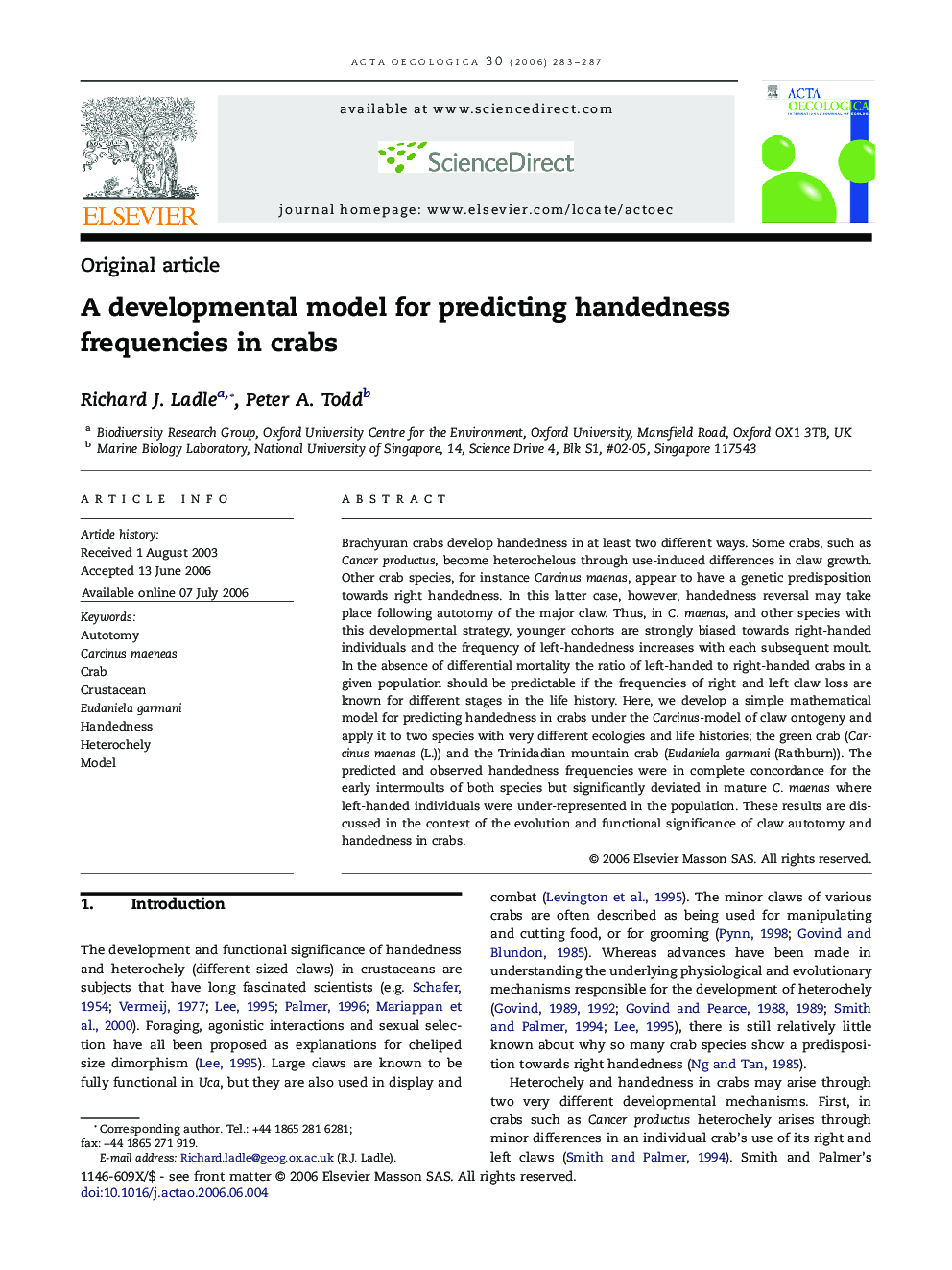| کد مقاله | کد نشریه | سال انتشار | مقاله انگلیسی | نسخه تمام متن |
|---|---|---|---|---|
| 4381705 | 1617734 | 2006 | 5 صفحه PDF | دانلود رایگان |

Brachyuran crabs develop handedness in at least two different ways. Some crabs, such as Cancer productus, become heterochelous through use-induced differences in claw growth. Other crab species, for instance Carcinus maenas, appear to have a genetic predisposition towards right handedness. In this latter case, however, handedness reversal may take place following autotomy of the major claw. Thus, in C. maenas, and other species with this developmental strategy, younger cohorts are strongly biased towards right-handed individuals and the frequency of left-handedness increases with each subsequent moult. In the absence of differential mortality the ratio of left-handed to right-handed crabs in a given population should be predictable if the frequencies of right and left claw loss are known for different stages in the life history. Here, we develop a simple mathematical model for predicting handedness in crabs under the Carcinus-model of claw ontogeny and apply it to two species with very different ecologies and life histories; the green crab (Carcinus maenas (L.)) and the Trinidadian mountain crab (Eudaniela garmani (Rathburn)). The predicted and observed handedness frequencies were in complete concordance for the early intermoults of both species but significantly deviated in mature C. maenas where left-handed individuals were under-represented in the population. These results are discussed in the context of the evolution and functional significance of claw autotomy and handedness in crabs.
Journal: Acta Oecologica - Volume 30, Issue 3, November–December 2006, Pages 283–287